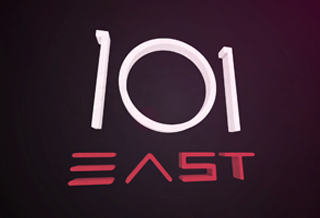
Killer crocs
As saltwater crocodiles stalk Australia’s waterways, we investigate if they should be culled to curb attacks on humans.
Heralded as the ‘animal most likely to eat a human’, saltwater crocodiles are a common feature in Australia’s tropical north. The ancient predator is the world’s largest reptile, growing up to seven metres long and weighing more than a tonne.
Once endangered due to commercial hunting, their numbers had dropped dramatically to just 3,000. However, following the introduction of protection laws in 1971, this steadily increased, with scientists now estimating their population at more than 100,000.
Keep reading
list of 4 itemsLost Futures
Photos: Greek valley that became a lake stirs drought debate
Botswana threatens to send 20,000 elephants to Germany
They are now so prevalent that saltwater crocodiles have been found in swimming pools and living rooms in the northern city of Darwin. But with more crocs, comes a higher chance of attacks on humans.
The most recent fatality was just few months ago. On January 26, a 12-year-old boy was taken by a 4-metre-long croc as he swam with other children in a swimming pond in Kakadu National Park. Park officials claim the area was well signposted as a crocodile danger-zone. Two of the fatal attacks in the past few months have involved indigenous children.
The relationship between crocodiles and the indigenous population goes back more than 40,000 years, with the crocodile revered, respected and a source of food. Just 500 crocs can be legally hunted with commercial licenses a year, many by indigenous people, who earn a maximum of $2,000 for each croc. Some elders are also calling for the government to allow trophy hunters to catch and kill crocs with their assistance. They would like to see hunters paid $20,000 a croc.
The Australian saltwater crocodile’s natural predatory nature begins at birth, according to a Charles Darwin University study. The study found that of seven different species, the saltwater croc was not only the most aggressive but is also prone to belligerence from the minute it leaves the egg.
They claim that if you dive off the Adelaide River bridge, 60km east of Darwin’s city centre, and start swimming, there is a 100 percent certainty of being taken by a saltwater croc. Researchers also launched the world’s first crocodile attack database – CrocBITE – last month, in an attempt to confirm reports that harmful or fatal incidents are increasing.
The attacks have led some members of the community to propose the government allow safari hunts to begin again. The federal government is expected to make a decision in November. But scientists say this could exacerbate the problem as crocodiles are already controlling the size of the wild crocodile population.
Saltwater crocs are very territorial and the larger ones eat smaller and younger crocs if they encroach on their territory. Scientists say if the larger ones are selectively removed, the population could be expected to expand. A cull may also give people a false sense of security and they may be more likely to swim in waters where it is unsafe to do so.
Tourism operators and some members of the Aboriginal community are opposed to culling crocodiles. Tourism, based on wild and captive crocodiles, is the mainstay of the Northern Territory, attracting holidaymakers from across the world. It is the Territory’s second-largest industry and its largest employer. National and international documentaries and media attention on the Northern Territory’s successful crocodile management programme is arguably the primary vehicle through which ‘Top End’ tourism is promoted against competing destinations.
Scientists say that after the recent attack, more tourists will learn about the Northern Territory through the media, and in a macabre twist, there will be an increase in tourist bookings.
Farming crocodiles for their skin and meat is another lucrative local industry. The Territory now supplies 50 percent of the world’s premium-grade skins. Crocodile farming, based largely on ranching (collecting and selling wild eggs), generates some $25m per year in skin sales for the international high fashion industry and has extensive commercial flow-on effects in the community.
Should the hunter be hunted? Tell us your views @AJ101East and remember to hashtag #KillerCrocs
| In Pictures: |
| 101 East airs each week at the following times GMT: Thursday: 2230; Friday: 0930; Saturday: 0330; Sunday: 1630.
Click here for more 101 East |
